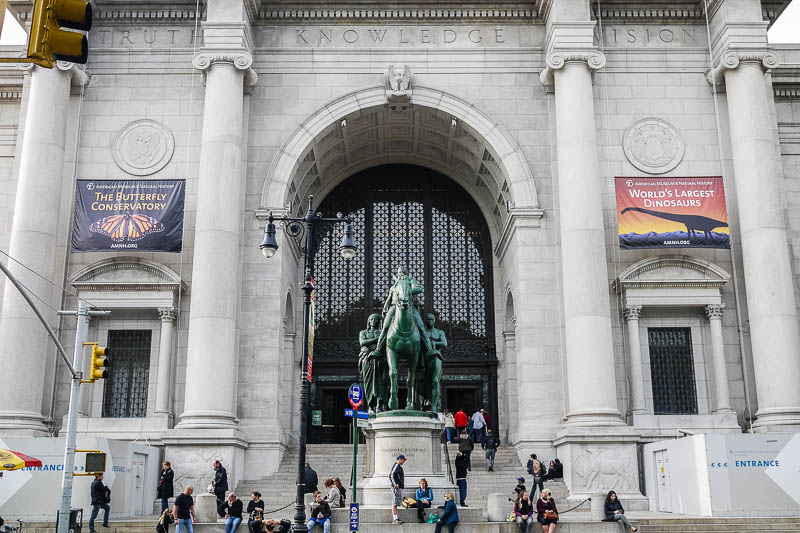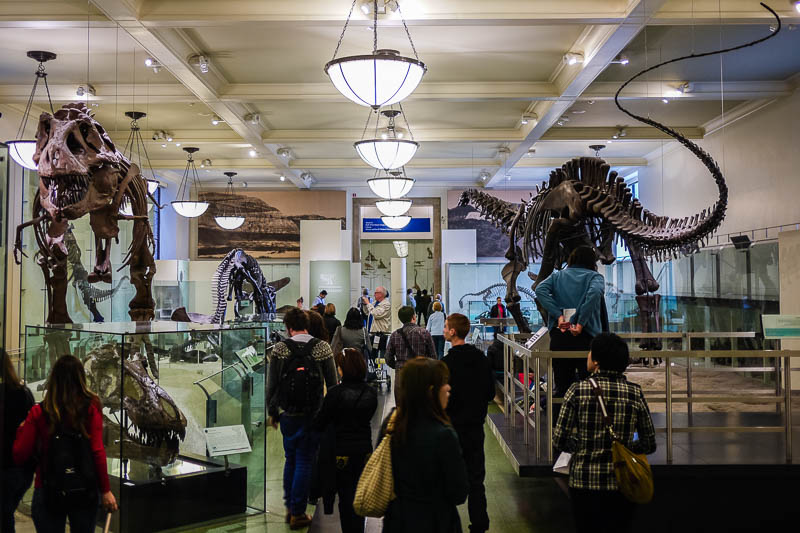[content_slider]
[content_slide]

[/content_slide]
[content_slide]

[/content_slide]
[content_slide]

[/content_slide]
[content_slide]

[/content_slide]
[content_slide]

[/content_slide]
[/content_slider]
NEW YORK CITY | The American Museum of Natural History is the largest natural history museum in the world, spread over 25 buildings across four city blocks. It was founded in 1869 with a mission to discover, interpret, and disseminate information about human cultures, the natural world, and the universe. It’s big and it’s impressive.
The museum’s collection contains over 33 million specimens of plants, animals, fossils, minerals, rocks, meteorites, human remains, and human cultural artifacts, only a fraction of which are on display at any given time. The original museum – a Victorian Gothic building, was opened in 1877 while the most recent annex, the Gilder Center, is currently under construction and will feature a pink Milford granite facade and a textural, curvilinear design inspired by natural topographical elements.
The museum contains 45 permanent exhibition halls, categorised as a high level as “Mammal halls”, ” Birds, reptiles, and amphibian halls”, “Biodiversity and environmental halls”, “Human origins and cultural halls”, “Earth and planetary science halls”, and “Fossil halls”. There’s also a planetarium and a library. Exhibits are set out in a logical manner with explanations that place what you’re looking at in its wider context, with a discussion of past and present knowledge and evidence.
Make sure you set aside at least a day to visit the American Museum of Natural History – you’ll need it just to see the things you’re interested in. If you want to attempt to see the entirety of what’s on display, set aside at least two full days.
American Museum of Natural History
Central Park West & 79th Street
New York
New York 10024
United States
Telephone: 212 769 5100
E-mail: n/a
Website
Open
Sun – Sat: 10:00am to 5:45pm

